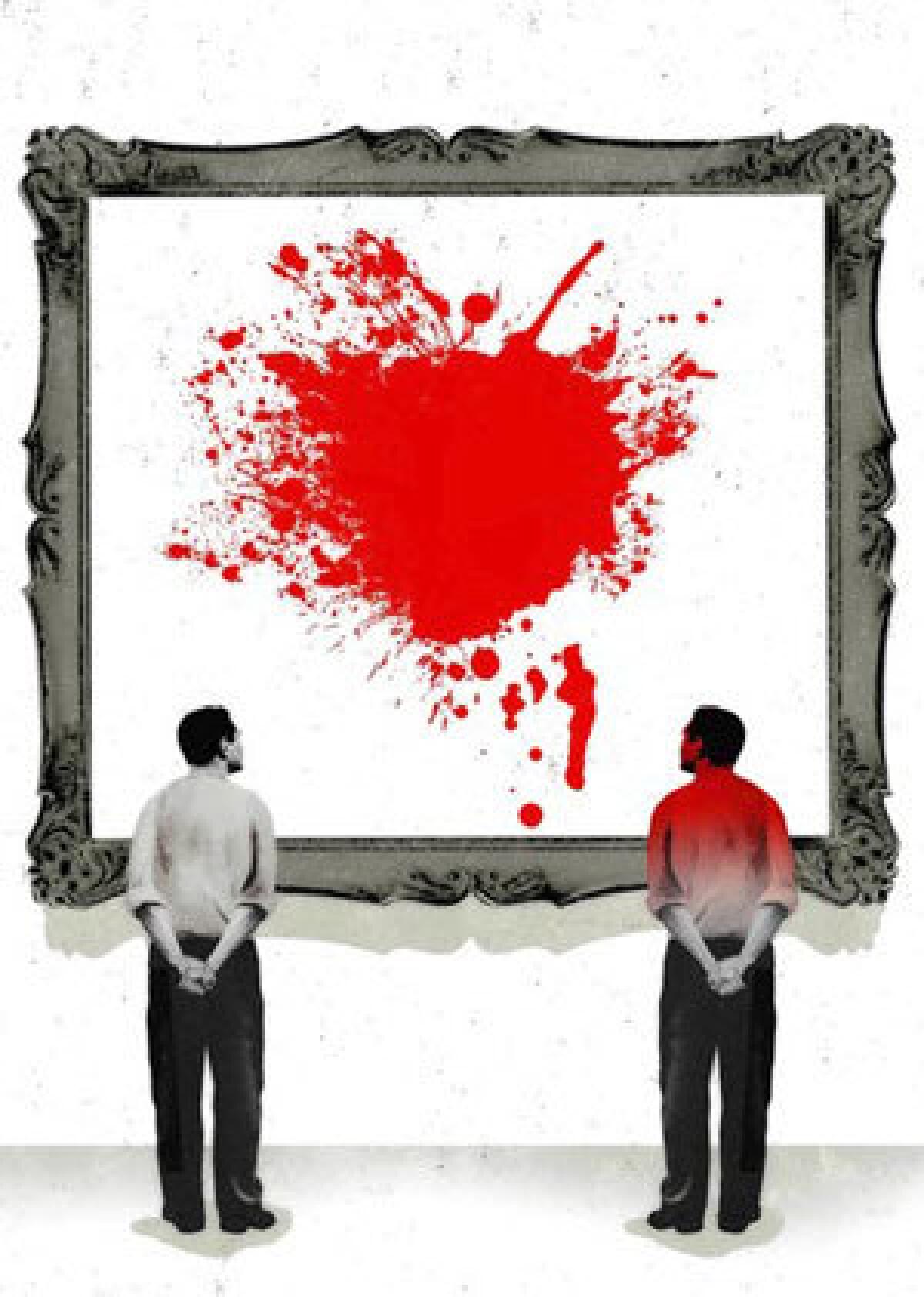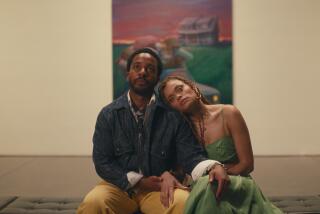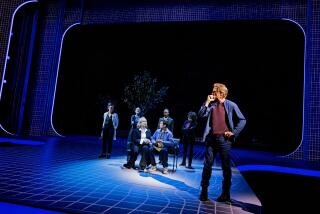Book Review: ‘The Art of Cruelty’

The Art of Cruelty
A Reckoning
Maggie Nelson
W.W. Norton: 304 pp., $24.95
From a movie billboard in her Los Angeles neighborhood to the Italian Futurists, Maggie Nelson swings her lively gaze across a century’s worth of art and culture in “The Art of Cruelty: A Reckoning.” The starting point for this study of violence and art is Antonin Artaud, the French playwright behind the “theatre of cruelty” who wrote that cruelty in art “signifies rigor, implacable intention and decision, irreversible and absolute determination.” Those ideas fascinate Nelson, but they don’t hold sway over her; she often brings up Buddhist thinking as a counterpoint, and she points out that Artaud, who died in an asylum in 1948, was both a failed dramatist and a notorious madman.
Madness aside, his cruel edge found traction in the avant-garde of the 20th century and beyond. Nelson sees it in the performance art of Chris Burden (who in 1971 had a friend shoot him in the arm), in the works of young video artist Ryan Trecartin and, again and again, in the paintings and approach of Francis Bacon. She sees it in other places as well, including the writing of Mary Gaitskill and Brian Evenson, the photographs of Abu Ghraib detainees and reality TV.
Nelson weaves low culture and high culture together conversationally, so that Stephen Colbert and Bacon can appear in the same paragraph. She trusts that her audience — whoever the audience of an engaging work of cultural criticism might be — is already familiar with playwright Samuel Beckett, core cutting artist Gordon Matta-Clark, composer John Cage and performance artist Nao Bustamante, providing only the barest sketches of their work.
Divided into short, thematic chapters — on imprisonment and captivity, for example — the book dives right into discussions of successful (and less successful) artistic works that hinge on cruelty. And then it swiftly problematizes these discussions by adding contradictory thinkers and counter-examples, a clear rhetorical strategy. “True moral complexity is rarely found in simple reversals,” Nelson writes. “More often it is found by wading into the swamp, getting intimate with discomfort, and developing an appetite for nuance.”
Underlying these explorations is the idea that cruelty is linked to rupture, to revelation, even to revolution. That art that seeks discovery will confront surfaces begging to be shattered, platitudes that demand piercing, attitudes that demand adjustment — and cruelty is the mechanism of breakage. Nelson links this both to our contemporary notions of scientific change — new theories are correct, replacing old theories that were wrong — and to Aristotle’s ancient idea of catharsis. And if you thought “catharsis” simply meant a purifying release of emotion or tension, Nelson digs into a translation of “Poetics” and parses the sentence, so that the emotions “pity and fear” can either be read as what is purged or what become the catalysts of purging.
As much as she admires Bacon, whose painting and writings she returns to as a touchstone, Nelson brings her deepest critical faculties to bear on performance art or art that is performed and filmed. Key to her are pieces that involve cruelty and (usually) the female body: Yoko Ono’s “Cut Piece” (1964), Marina Abramović’s “Rhythm O” (1974), Catherine Opie’s “Self-Portrait/Pervert” (photograph, 1994). All these pieces involve violations of the body, and Nelson examines the contradictory layers of voyeurism, violation and empowerment. Opie’s “body squarely presents itself to us as bleeding, resilient, imperial, and desirous.”
This is criticism at its best: evocative, plainspoken, with an unwavering point of view. As Nelson darts from artwork to artwork, using the lens of cruelty to shine her own particular light, there is a joy in both her conviction and her questions. She leaves, as only a confident intellectual can, space for contradiction and discussion. Yet that space may be just a little too wide. Nelson often stops short of making connections between her insights: Watching Ono’s piece as performed at Carnegie Hall in 1965, Nelson writes, “The surplus of contradictory emotions builds in slow motion toward the unbearable. Cut tape.”
Nelson taught a seminar in the art of cruelty at CalArts, where she is part of the criticism and creative writing faculty. At times, the gaps in the book feel like the building blocks of a syllabus, with space left for interaction, and juxtapositions designed to spark questions or even offense. This is effective pedagogy in the classroom, where, say, students might explore why she embraces Opie while finding the 1999 movie “Boys Don’t Cry” to be “ghastly.” On the page, however, there is only another paragraph break (cut tape).
This is a rhetorical stance, one that Nelson lays bare in the last chapter. She points out that within conflicting ideas, literary critic Roland Barthes suggested the Neutral, a quiet coexistence within a paradox. “Preserving space for such responses [as the Neutral] has been one of this book’s primary aims,” she writes. “Of equal importance has been making space for paying close attention, for recognizing and articulating ambivalence, uncertainty, repulsion, and pleasure.” The pleasures of “The Art of Cruelty” may be somewhat diminished by its looseness, by Nelson’s reluctance to provide the continuity and connection a critic can. Nonetheless, it is a vibrant and engaged work, from a writer and thinker who is worthy of our attention.
More to Read
Sign up for our Book Club newsletter
Get the latest news, events and more from the Los Angeles Times Book Club, and help us get L.A. reading and talking.
You may occasionally receive promotional content from the Los Angeles Times.








